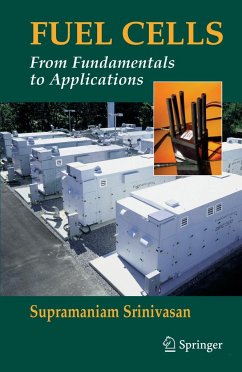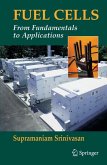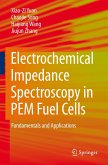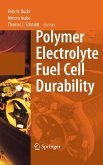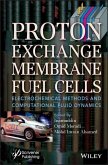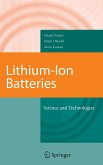This concise sourcebook of the electrochemical, engineering and economic principles involved in the development and commercialization of fuel cells offers a thorough review of applications and techno-economic assessment of fuel cell technologies, plus in-depth discussion of conventional and novel approaches for generating energy. Parts I and II explain basic and applied electrochemistry relevant to an understanding of fuel cells. Part III covers engineering and technology aspects. The book is useful for undergraduate and graduate students and scientists interested in fuel cells. Unlike any other current book on fuel cells, each chapter includes problems based on the discussions in the text.
Dr. Supramaniam Srinivasan (1932-2004) obtained his Bachelor of Science with Honors in Chemistry from the University of Ceylon in l955 and his PhD in Physical Chemistry from the University of Pennsylvania in 1963. The title of his PhD is Mechanism of Electrolyte Hydrogen Evolution: An Isotope Effect Study, which he did under the direction of Professor John O'Mara Bockris. Srini, as he liked to be called, was very productive throughout his career. He spent several years as a po- doc with Dr. Bockris and published his first book on fuel cells with Dr. Bockris in 1969. The title of their book is Fuel Cells: Their Electrochemistry, which was published by McGraw-Hill. In l966, Srini began serving as an Assistant Professor of Electrochemistry in Surgical Research at the Downstate Medical Center, State University of New York (DMC-SUNY) in Brooklyn, New York. While he was there, Srini published several articles on the use of electrochemical methods in medical applications and later wrotea chapter on the subject entitled "An Electrochemical Approach to the Solution of Cardiovascular Problems," which appeared as Chapter 8 in Volume 10 of the Comprehensive Treatise of Electrochemistry, Biochemistry. Srini left DMC-SUNY in 1973 and served at several institutions including the Los Alamos National Laboratory (LANL) where he returned to more energy related electrochemical topics. Srini left LANL in 1988 and began serving as the Deputy Director of the Center for Electrochemical Systems and Hydrogen Research at Texas A&M University where I was at that time.
Dr. Supramaniam Srinivasan (1932-2004) obtained his Bachelor of Science with Honors in Chemistry from the University of Ceylon in l955 and his PhD in Physical Chemistry from the University of Pennsylvania in 1963. The title of his PhD is Mechanism of Electrolyte Hydrogen Evolution: An Isotope Effect Study, which he did under the direction of Professor John O'Mara Bockris. Srini, as he liked to be called, was very productive throughout his career. He spent several years as a po- doc with Dr. Bockris and published his first book on fuel cells with Dr. Bockris in 1969. The title of their book is Fuel Cells: Their Electrochemistry, which was published by McGraw-Hill. In l966, Srini began serving as an Assistant Professor of Electrochemistry in Surgical Research at the Downstate Medical Center, State University of New York (DMC-SUNY) in Brooklyn, New York. While he was there, Srini published several articles on the use of electrochemical methods in medical applications and later wrotea chapter on the subject entitled "An Electrochemical Approach to the Solution of Cardiovascular Problems," which appeared as Chapter 8 in Volume 10 of the Comprehensive Treatise of Electrochemistry, Biochemistry. Srini left DMC-SUNY in 1973 and served at several institutions including the Los Alamos National Laboratory (LANL) where he returned to more energy related electrochemical topics. Srini left LANL in 1988 and began serving as the Deputy Director of the Center for Electrochemical Systems and Hydrogen Research at Texas A&M University where I was at that time.
From the reviews: "The present book has been written by an expert recognized by everybody in the special field of fuel cells as well as in electrochemistry in general. ... All chapters end with suggestions for further reading, a list of cited references, and some problems. ... The book has been carefully prepared and produced. ... Its price is adequate and puts it within reach of both libraries and researchers. It can be recommended wholeheartedly." (Rudolf Holze, Journal of Solid State Electrochemistry, Vol. 11 (12), 2007)

